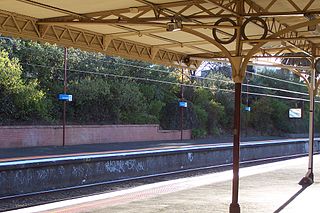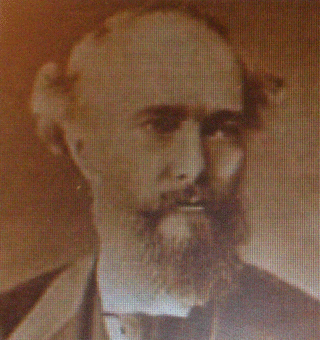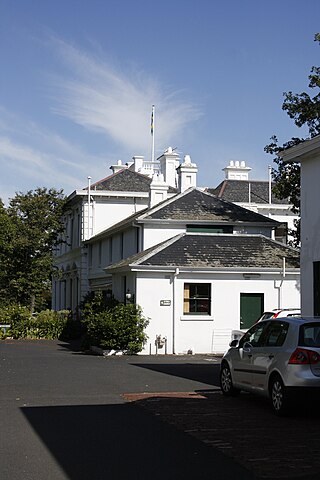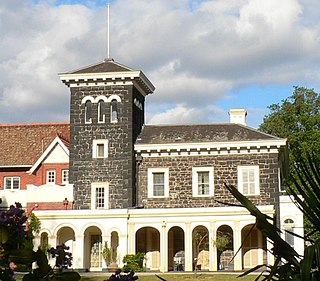
Government House, colloquially known as Yarralumla, is the official residence of the governor-general of Australia. It is located in the suburb of Yarralumla in the Australian capital city of Canberra, in the Australian Capital Territory. The main residence is set amid 54 hectares of parkland. The house and its associated grounds were added to the Commonwealth Heritage List on 22 June 2004.

Armadale is an inner suburb in Melbourne, Victoria, Australia, 7 km south-east of Melbourne's Central Business District, located within the City of Stonnington local government area. Armadale recorded a population of 9,368 at the 2021 census.

South Yarra is an inner-city suburb in Melbourne, Victoria, Australia, 4 km south-east of Melbourne's Central Business District, located within the Cities of Melbourne and Stonnington local government areas. South Yarra recorded a population of 25,028 at the 2021 census.

Toorak is a suburb of Melbourne, Victoria, Australia, 5 km (3.1 mi) south-east of Melbourne's Central Business District, located within the City of Stonnington local government area. Toorak recorded a population of 12,817 at the 2021 census.

William Wilkinson Wardell (1823–1899) was a civil engineer and architect, notable not only for his work in Australia, the country to which he emigrated in 1858, but for a successful career as a surveyor and ecclesiastical architect in England and Scotland before his departure.

East Melbourne is an inner-city suburb in Melbourne, Victoria, Australia, 2 km (1.2 mi) east of Melbourne's Central Business District, located within the City of Melbourne local government area. East Melbourne recorded a population of 4,896 at the 2021 census.

The Italianate style was a distinct 19th-century phase in the history of Classical architecture. Like Palladianism and Neoclassicism, the Italianate style combined its inspiration from the models and architectural vocabulary of 16th-century Italian Renaissance architecture with picturesque aesthetics. The resulting style of architecture was essentially of its own time. "The backward look transforms its object," Siegfried Giedion wrote of historicist architectural styles; "every spectator at every period—at every moment, indeed—inevitably transforms the past according to his own nature."

The Carlton Gardens is a UNESCO World Heritage Site located on the northeastern edge of the Central Business District in the suburb of Carlton, in Melbourne, Australia. A popular picnic and barbecue area, the heritage-listed Carlton Gardens are home to an array of wildlife, including brushtail possums.

The Treasury Gardens consist of 5.8 hectares on the south-eastern side of the Melbourne central business district, East Melbourne, Victoria, Australia. The gardens are bounded by Wellington Parade, Spring Street, Treasury Place, and by the Fitzroy Gardens across Lansdowne street to the west. They form part of a network of city gardens including Fitzroy Gardens, Carlton Gardens, Flagstaff Gardens and Kings Domain. The gardens are listed on the Australian National Heritage List and the Victorian Heritage Register for their historical, archaeological, social, "aesthetic and scientific (horticultural) importance for its outstanding nineteenth century design, path layout and planting".

Kings Domain is an area of parklands in Melbourne, Victoria, Australia. It surrounds Government House Reserve, the home of the governors of Victoria, the Sidney Myer Music Bowl, and the Shrine Reserve incorporating the Shrine of Remembrance.

William Robert Guilfoyle was an English landscape gardener and botanist in Victoria, Australia, acknowledged as the architect of the Royal Botanic Gardens, Melbourne and was responsible for the design of many parks and gardens in Melbourne and regional Victoria.

Melbourne is Australia's second largest city and widely considered to be a garden city, with Victoria being nicknamed "the Garden State". Renowned as one of the most livable cities in the world, there is an abundance of parks, gardens and green belts close to the CBD with a variety of common and rare plant species amid landscaped vistas, pedestrian pathways, and tree-lined avenues, all managed by Parks Victoria.

Mount Macedon is a town 64 kilometres (40 mi) north-west of Melbourne in the Australian state of Victoria. The town is located below the mountain of the same name, which rises to 1,001 metres (3,284 ft) AHD. At the 2016 census, Mount Macedon had a population of 1,335 and is best known for its collection of 19th-century gardens and associated extravagant large homes, which is considered to be one of the most important such collections in Australia.

Stonington is a private residence and former Australian Government House located in the Melbourne suburb of Malvern, at 336 Glenferrie Road. The house was built for John Wagner, a partner in Cobb and Co coaches. Stonington gave its name to the City of Stonnington, a Melbourne municipality.

Toorak House is a mansion located in Melbourne, Australia built in 1849 by well-known Melbourne merchant James Jackson. It is notable for its use as Melbourne's first Government House and having inspired the name for the suburb of Toorak.

Bishopscourt is a large colonial mansion located on Clarendon Street in East Melbourne, Australia.

Bishopscourt, Darling Point is a heritage-listed residence and former archbishop's residence at 11A Greenoaks Avenue, Darling Point, Sydney, Australia. It was designed by J. F. Hilly (1846), Edmund Blacket (1859) and Leslie Wilkinson (1935) and built from 1846 to 1849 by Thomas Woolley (1841); Thomas Sutcliffe Mort. It is also known as Bishopscourt and Greenoaks. Up until December 2015, the property was owned by the Anglican Diocese of Sydney; and is now privately owned. The property was added to the New South Wales State Heritage Register on 2 April 1999.

The architecture of Melbourne, Victoria, and Australia is characterised by a wide variety of styles. The city is particularly noted for its mix of Victorian architecture and contemporary buildings, with 74 skyscrapers in the city centre, the most of any city in the Southern Hemisphere.
Marcus Martin (1893–1981) was an Australian architect. He was an associate of the Royal Institute of British Architects, fellow of Royal Institute of Architects, and honorary secretary to the Royal Victorian Institute of Architects.

























